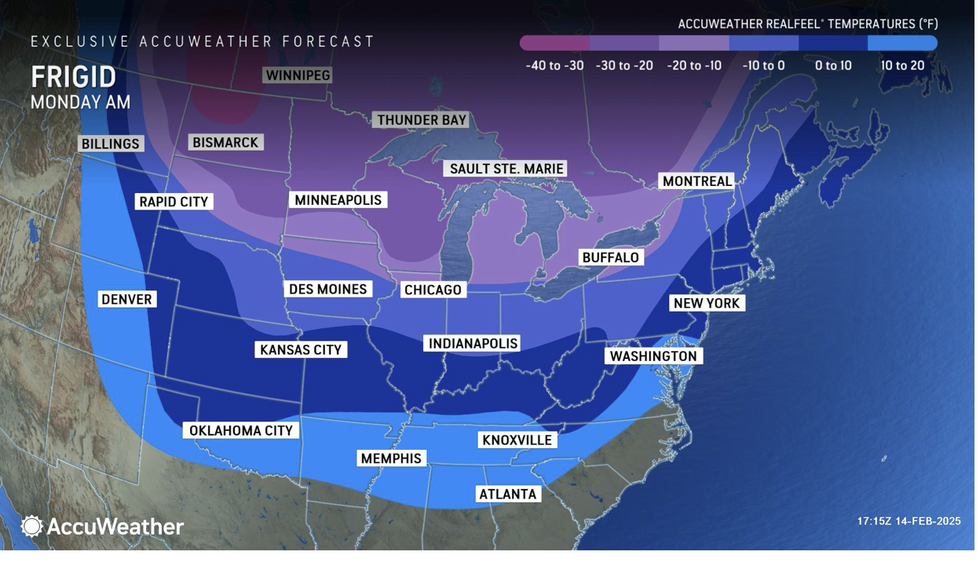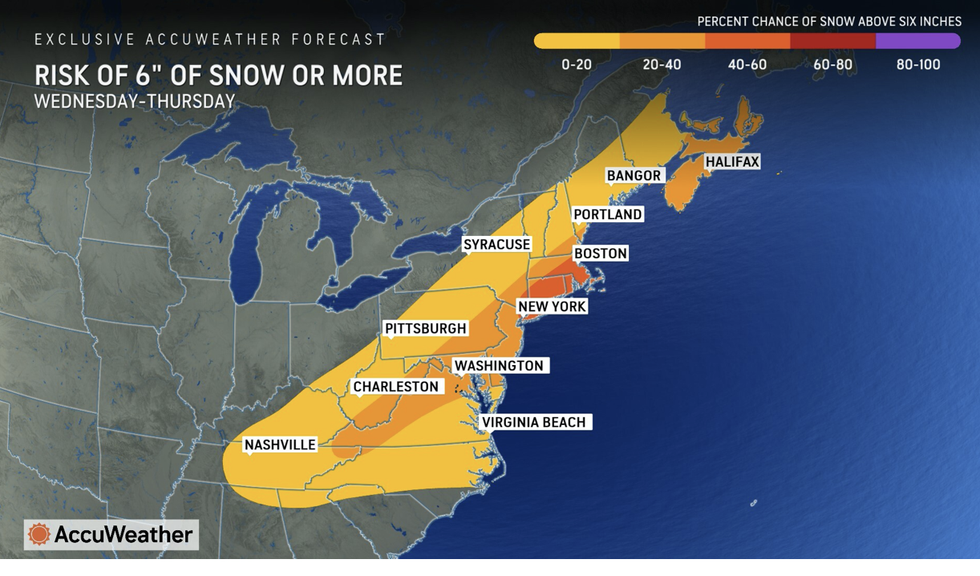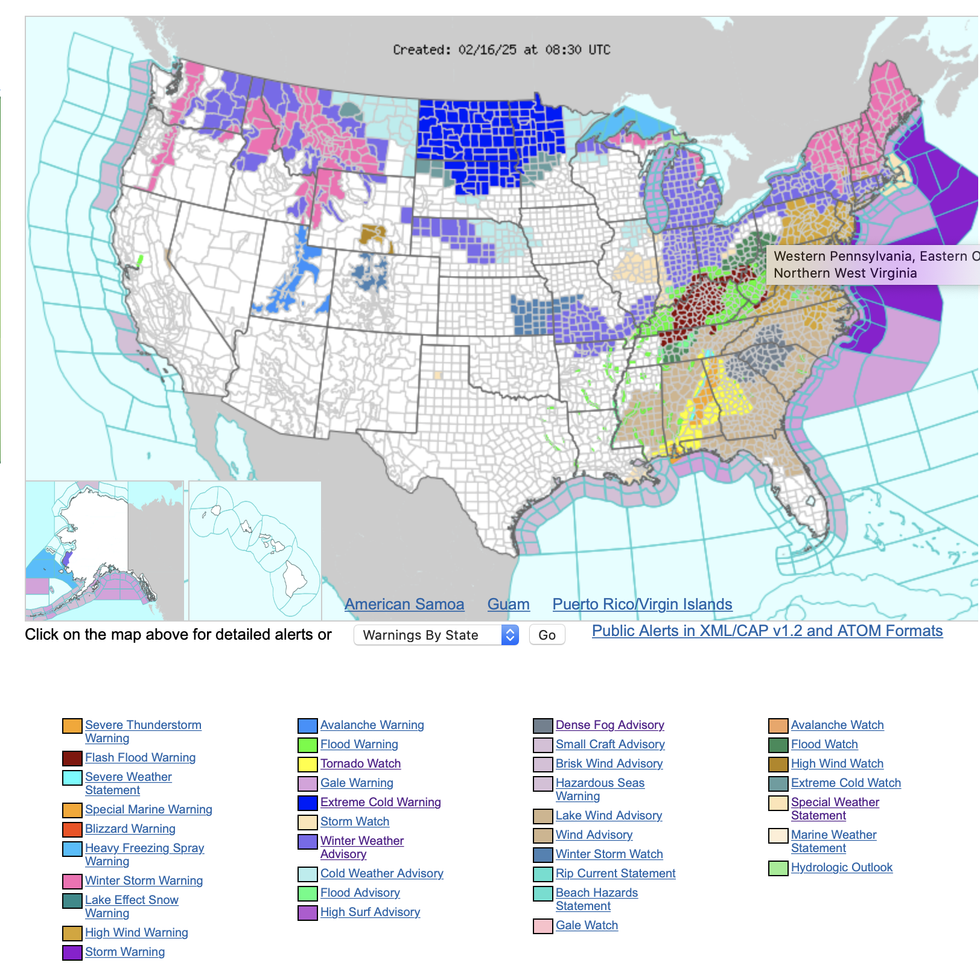WATCH: Bev & Andrew fume at schools deciding to stay closed due to cold weather
GB News
National weather alerts have been issued
Don't Miss
Most Read
Trending on GB News
A devastating minus-50C ‘Arctic surge’ scouring the United States will end winter with a ‘life-threatening’ mega whiteout.
‘Dangerously’ low temperatures will hit more than 80 million Americans this week as temperatures plunge as far south as Texas.
Bitter winds will make it feel close to a staggering -50C, experts warn, sparking rafts of national weather alerts.
A spokesman for the US National Weather Service (NOAA) said: “Life-threatening cold is expected for the northern Plains with low temperatures into the minus 30Fs near the Canadian border.

A deep Arctic chill will descend from the north
AccuWeather
“Gusty winds will lead to a windchill of -60F [-51.1C] degrees below zero, and this cold can lead to frostbite in a matter of minutes.
“Further south, forecast highs in the teens and 20s will be common across the central Plains into the Midwest with 40Fs and 50Fs from Texas eastward into the lower Mississippi Valley, but more intense cold is expected here further into the week.”
Cold weather is being fuelled by intense storms sweeping the nation dragging plumes of Polar air in their wake.
A major storm over the weekend opened the floodgates to a barrage of cyclonic assaults which will drive the intense winter weather.
US LATEST:
Map shows which areas at risk of snow in US
AccuWeather
NOAA added: “Arctic air will rush in behind the big weekend storm for the entire eastern United States, changing rain to snow along the western slopes of the central Appalachians where blizzard conditions are possible.
“The Arctic air mass will be a major weather story as well-below-average to dangerously cold temperatures overspread the eastern half of the country behind the big storm.”
Bitter cold winds will dig in through the week and probably into the start of meteorological spring, experts warn.
Arctic gusts will steer in from the north on board a ‘Pineapple Express atmospheric river’ of storms hitting the Pacific coast.

NOAA weather warnings in effect
NOAA
Moisture and milder temperatures hitting the Arctic airmass will unleash torrents of snow as powerful gales whip up crippling blizzards.
Jim Dale, US meteorologist for British Weather Services and co-author of ‘Surviving Extreme Weather’, said: “The Pineapple Express is coming in from the west and this will run the cold weather across the country through the week.
“As cold fronts come through, there will be some very low temperatures and the risk of storms as the cold air hits warmer air from the Gulf of Mexico.”
Millions of Americans face travel hell as snow and ice cripples roads, airports and transport networks.
A winter deluge in the worst-hit regions will see Arctic drifts pile up at a rate of several inches per hour.
AccuWeather meteorologist Jonathan Porter said: “More than 80 million people could be affected by snow, ice and hazardous travel conditions.
“We could see snowfall piling up at a rate of one to two inches per hour in some spots during the height of the storm.
“Then get ready for another round of frigid air from Canada that will surge down into the Plains all the way to northern Texas, then spreading to the East Coast.”
Where heavy rain meets snow melt further south, flooding will add to the chaos, experts warn.
Weather Channel meteorologist Jennifer Gray said: “Flood watches have been issued by the National Weather Service for the heavy rain threat from the lower Mississippi, Tennessee and Ohio valleys into the central Appalachians.
“If you live in a flood-prone location, make sure you have several ways of receiving National Weather Service warnings and be prepared to evacuate quickly if flooding threatens or requested by local emergency management.”








